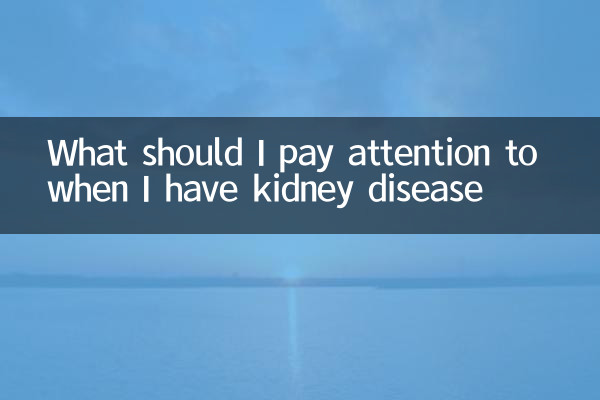Title: What should IgA nephropathy pay attention to
IgA nephropathy is a common primary glomerulopathy characterized by IgA deposition in the mesangial region of the glomerulus. In recent years, with the changes in lifestyle and the improvement of health awareness, the attention to IgA kidney disease has gradually increased. The following is a summary of precautions and hot topics about IgA kidney disease.
1. Basic knowledge of IgA kidney disease

IgA nephropathy is more common in adolescents, and the incidence rate in men is slightly higher than that in women. Its clinical manifestations are diverse, and may manifest as asymptomatic hematuria, proteinuria, and even renal failure. The following are the main symptoms and diagnosis methods of IgA nephropathy:
| symptom | Diagnostic method |
|---|---|
| Hematuria (numerary or microscopic) | Routine urine test |
| Protein urine | 24-hour urine protein quantification |
| hypertension | Blood pressure monitoring |
| Disorders of kidney function | Detection of serum creatinine and urea nitrogen |
| Kidney biopsy | The gold standard for the diagnosis of IgA nephropathy |
2. Precautions for IgA kidney disease
1.Dietary Management: Patients with IgA nephropathy should follow the dietary principles of low-salt, low-fat, and high-quality protein to avoid high-purine foods.
| Food Type | recommend | avoid |
|---|---|---|
| protein | Eggs, milk, lean meat | Fat meat, animal internal organs |
| Salt | Daily salt intake <3g | Pickled food, processed food |
| Moisture | Drink water in moderation | Excessive drinking of water (edema patients) |
2.Lifestyle adjustment: Avoid overwork, maintain regular routines, exercise moderately (such as walking, yoga), quit smoking and limit alcohol.
3.Regular follow-up: Patients with IgA nephropathy need to regularly review routine urine routine, renal function and blood pressure, and adjust treatment plans in a timely manner.
| Check items | frequency |
|---|---|
| Urine routine | 1 time a month |
| 24-hour urine protein quantification | Once every 3 months |
| Serum creatinine, urea nitrogen | Once every 6 months |
| Blood pressure monitoring | Daily or weekly |
IgA nephropathy treatment hot spots
1.Drug treatment: Currently, the treatment of IgA nephropathy is mainly to control blood pressure, reduce proteinuria and protect renal function. Commonly used drugs include ACEI/ARB drugs, glucocorticoids and immunosuppressants.
| Drug Type | effect | Common medicines |
|---|---|---|
| ACEI/ARB | Lower blood pressure and reduce proteinuria | Benapril, Valsartan |
| Glucocorticoid | Anti-inflammatory, immunosuppressive | Prednisone |
| Immunosuppressants | Suppress immune response | Cyclophosphamide, mycophenolic acid ester |
2.Emerging Therapies: In recent years, new targeted drugs (such as budesonide targeted release preparations) and stem cell therapy for IgA nephropathy have become research hotspots, but further clinical trials are still needed to verify.
IV. Prognosis and prevention of IgA nephropathy
The prognosis of IgA nephropathy varies from person to person, some patients have stable conditions, and a few may progress to end-stage renal disease. Early diagnosis and standardized treatment are key. Preventive measures include:
- Avoid infections (such as colds, tonsillitis);
- Control hypertension and diabetes;
- Maintain a healthy weight.
In short, patients with IgA nephropathy need comprehensive management, combined with diet, lifestyle and drug treatment, and regular follow-up to delay the progress of the disease.

check the details

check the details